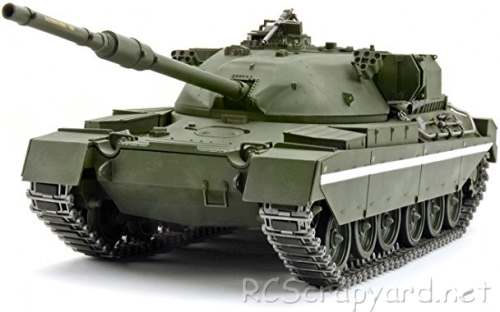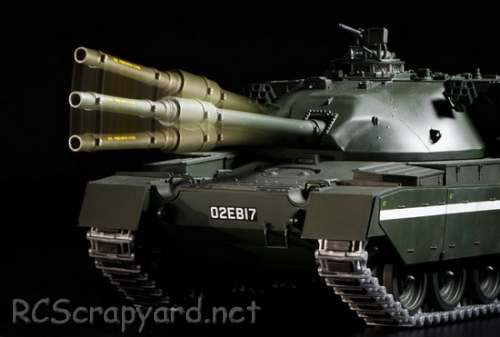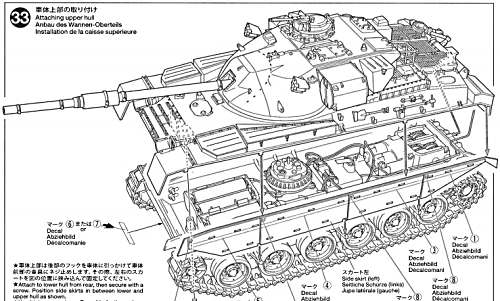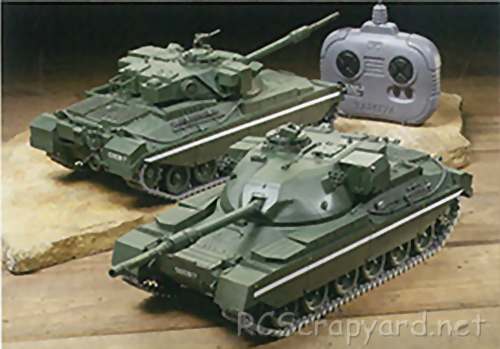

|
|
|


|
Tamiya British Army Battle Tank Cheiftain - Complete Kit - 56603 (Radio Controlled Model Review)1/25 Scale Electric Tank -
Released by Tamiya on April 22, 2009, the British Army Battle Tank Cheiftain - Prototype (#56603) is based on a plastic tub chassis, with a rear-mounted double gearbox driven by two 280 electric motors, that operate together or individually to produce forward/reverse running and pivot turning.
▼ Scroll Down for More Images ▼
Rating: 4
|








|
|
|

|




|
Hints, Tips and Information
How to avoid Radio Interference
1/ The first consideration when installing your Receiver into your Electrically Powered Model is to make sure it is well away from the Negative Battery terminal, and the Motor. The Magnetic field can cause stuttering type interference at times of high current draw (i.e., Fast Acceleration) |









|






|
|
|
|
Hints, Tips and Information
Choosing a Transmitter
When you first started in RC, you may have purchased a package that came with the car kit, motor, battery, charger, ESC and radio system complete. The transmitter was probably just a basic steer wheel, or stick type, with nothing more than forward, reverse, left, right and simple trim settings to centralise the servo and ESC. |
|
Hints, Tips and Information
Bumpsteer
In plain language, Bumpsteer is exactly what it sounds like. If your car goes over a bump, it will affect the toe-in setting and can on some tracks make handling of the car in a straight line difficult. |
|
RC Models:
|
Radio & Motors: |
Other
Accessories: |